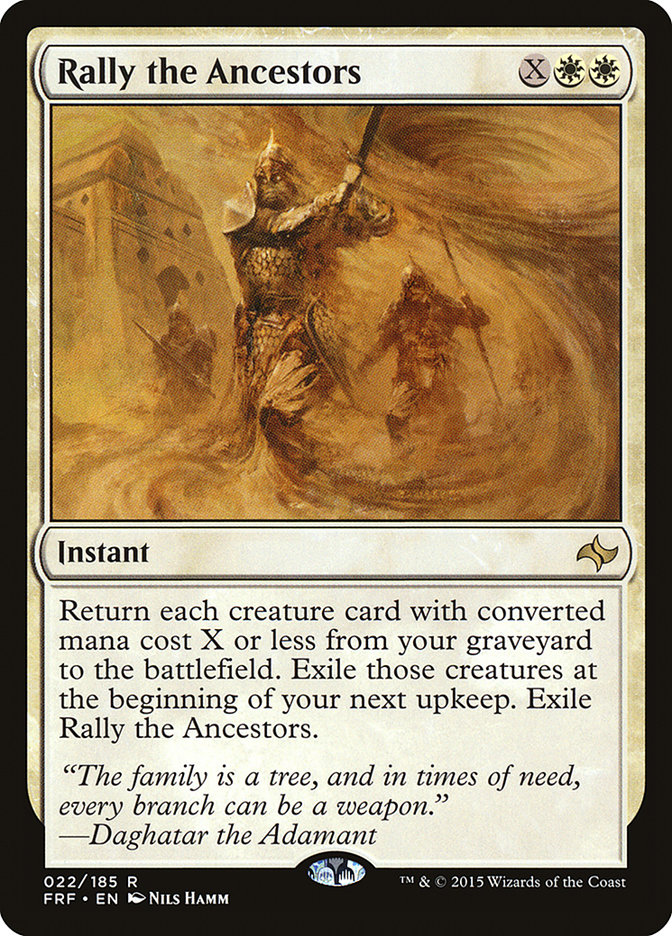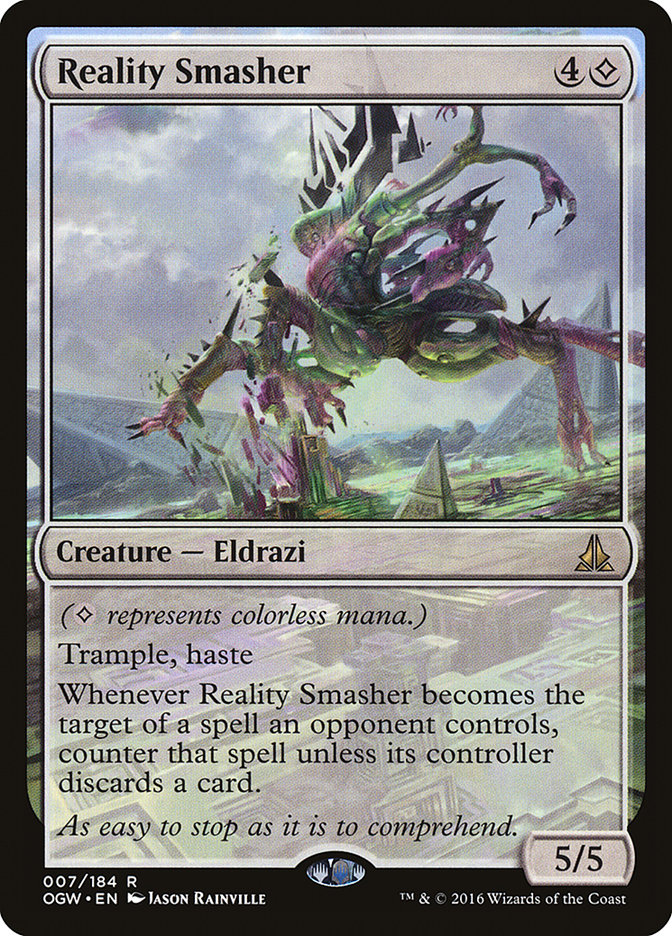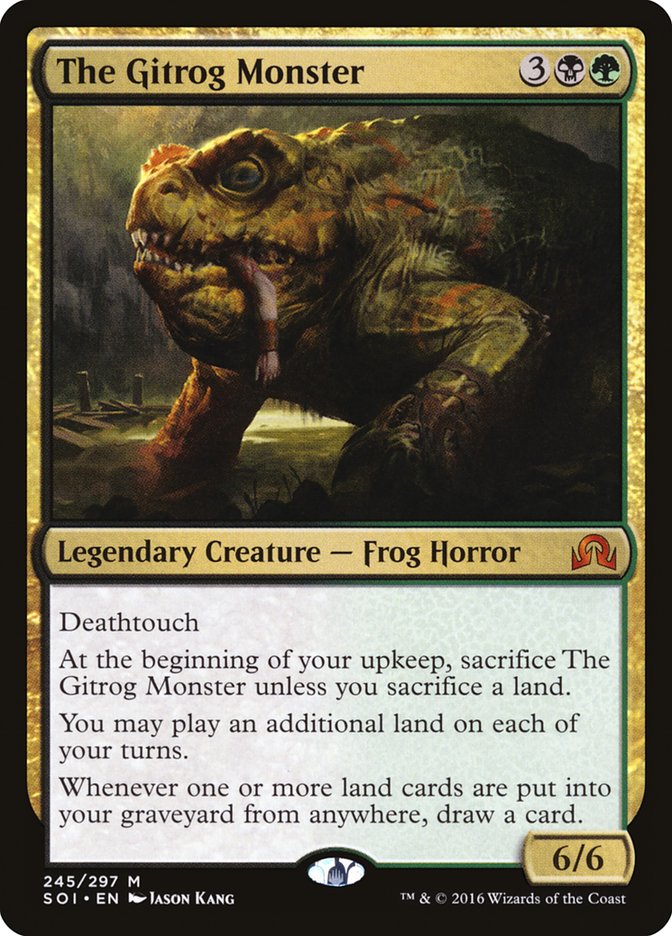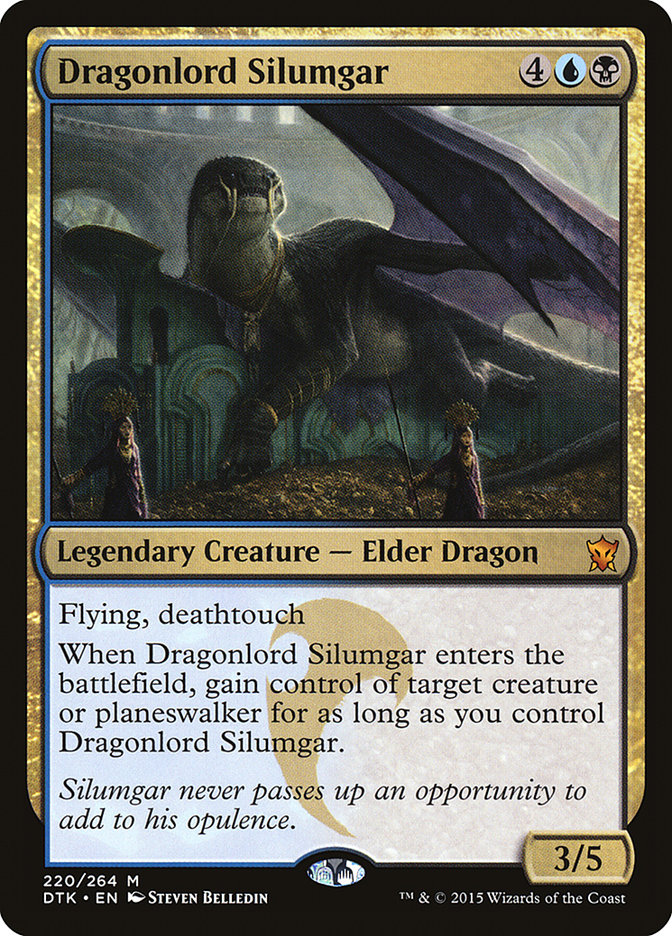With the 2016 SCG Tour coming to a close with the Players’ Championship on the seventeenth, I would like to take a moment to look back on my experiences throughout my first full year of high-level competitive Magic. This is going to be a little different from my normal article, but if you’re thinking about making the jump to traveling to Magic events, then hopefully you’ll learn something from my experiences throughout the year. I started traveling to every SCG Tour event during the last few months of 2015 to prepare myself to make a run at the exclusive Players’ Championship in 2016, and there were plenty of ups and downs throughout the journey, so let’s take a look back on what my 2016 SCG Tour year was like.
Jan. 2-3, Cincinnati: 2016 started with a roller coaster of emotions. Team Lotus, captained by Chris Andersen, was announced the first day of the year. They were a dedicated SCG Tour team with plenty of talented players, and with rumors of even more teams that were starting to form, I honestly didn’t think I was going to be able to compete on my own. I had already had the flights booked to the four January Opens, but figured that would be it for my competitive play. Little did I know at the time how short I was selling myself. I played Naya Company in the 1028-person Open, and with the belief that I was only going to be traveling on the SCG Tour for one month, I gave it my all.
Disaster almost struck after Round 3 or 4, when I accidentally left my deck on the table after my round. Naya Company isn’t a cheap deck at all, and it held most of my Modern collection at the time, but thankfully someone turned the deck in to Lost and Found so I could continue playing. I might have been done with the game if the deck was lost. After seventeen rounds, I had a Top 4 finish and, more importantly, the return of confidence to my game.
Creatures (26)
- 4 Tarmogoyf
- 4 Wild Nacatl
- 4 Noble Hierarch
- 4 Knight of the Reliquary
- 2 Qasali Pridemage
- 2 Scavenging Ooze
- 3 Loxodon Smiter
- 3 Voice of Resurgence
Lands (22)
Spells (12)

Jan. 9-10, Charlotte: Fortune favored me yet again. I was staying with some players from Roanoke for the first time and because of my previous weekend I had byes, so when they left for the site early, I went back to sleep. Turned out my phone died during the night, though, and thankfully Ross Merriam left something in the room and woke me up fifteen minutes before the tournament started, because I hadn’t submitted a decklist yet! No time to change anything now: I just copy-pasted my Top 8 list from the week before. Turns out that list was perfect, as I ended up making my second straight Top 8 to start the year! This is when I definitely knew I could make the Players’ Championship if I stuck with it, and I was all-in for 2016.
Jan. 23-24, Atlanta: I had another respectable finish, eleventh place with Four-Color Rally, but this tournament was a great learning experience for me. For the first time I had a Day 2 that was stacked with very good opponents, and I was easily outplayed by both Joe Lossett and Michael Majors. This was a humbling experience that helped me realize where my game needed to be to compete on their level. My Four-Color Rally mirror match with Majors was one to remember, though, as we played a Game 1 that lasted around 40 minutes, and then we both got a game loss in Game 2.
We were both using black sleeves, and I accidentally shuffled one of his Rally the Ancestors that was exiled from the first game into my deck, so I had a 61-card deck with five Rally the Ancestors and he had a 59-card deck. The game losses cancelled out, and he promptly won game two to finish the match.
Jan. 30-31, Columbus: I played Four-Color Rally again, and after picking up two losses and a draw early on in the tournament, I developed a really bad habit. For those of you who remember playing Four-Color Rally mirrors or against Abzan, the matches could take a long time. I started to rush every decision I made, even when the clock read 47:00, because taking 30 seconds to determine a line could result in another draw. I played against a couple of players in a row that took their time, which they of course had the right to, but I felt like I had to overcompensate and take as little as possible. This habit didn’t go away at the end of the tournament, though, and it took me a couple of months to come to the realization that I was playing way too quickly and recklessly.
Feb. 20-21, Louisville: This was when Andrew Tenjum broke Modern with U/W Eldrazi, and I made the mistake of playing Abzan Company instead of it. I played six rounds after my two byes and went 0-3 versus Eldrazi and 3-0 versus everything else. If there is an obviously broken deck in the format, play the deck. End of story.
Apr. 9-10, Baltimore: This was the first weekend of Shadows over Innistrad Standard, and my deck was kinda all over the place. When you’re on your own, testing is pretty difficult, so I just threw together a bunch of cards that I would want. The counterspells were great and Dragonlord Silumgar was unbeatable, but The Gitrog Monster wasn’t good.
Can’t win ’em all, and even though this deck was ridiculous, it was still a blast to play. I even beat the reigning World Champion Seth Manfield, who was playing Mono-White Humans, a real deck! (Disclaimer: I had a perfect hand Game 1, including my one-of Languish, and Game 3 he mulliganed to four and still almost beat me.) It’s okay to play a crazy deck full of awesome cards, because enjoying the game is always the most important thing.
Creatures (20)
- 2 Dragonlord Silumgar
- 4 Den Protector
- 4 Deathmist Raptor
- 4 Jace, Vryn's Prodigy
- 1 Nissa, Vastwood Seer
- 2 Hangarback Walker
- 2 Mindwrack Demon
- 1 The Gitrog Monster
Lands (25)
Spells (15)

Apr. 30 – May 1, Milwaukee: I was playing Abzan Company (for probably the last time ever) and it was the deck that was on everyone’s radar. The tournament was a tough battle where every opponent was ready for Abzan Company, including a Merfolk player with multiple Grafdigger’s Cages. I even ended up with two unintentional draws. In Modern. I was exhausted by the end of the tourney, and knew I was finished with the deck and needed something new. Gerry Thompson was doing pretty well with a G/R Eldrazi deck but said between rounds that he thought there could be a Bant deck that was better. Michael Majors sent me a preliminary list of what a Bant Eldrazi deck could look like, and the rest is history.
May 14-15, Indianapolis: I spent the two weeks before working on making the best Bant Eldrazi deck I could, and when I stepped into the convention center, I was pretty excited. Four of my first five rounds were against Andrew Tenjum, Jeff Hoogland, Ryan Overturf, and Danny Jessup, so the deck got a serious test right out of the gate. I ended up going 11-4 in the tournament, but I really wish I could have a do-over because I messed up three of my losses pretty badly and realized it shortly after. The deck was good enough to win the tournament, especially with people not used to it, but I wasn’t, which provided a good learning experience.
June 4-5, Atlanta: This was my favorite tournament of the year, which I guess is understandable considering it’s the one I did my best in. Gerry Thompson absolutely destroyed the Swiss rounds, finishing a perfect 15-0. He was truly playing on a different level from everyone else and had innovative sideboard plans that he was implementing perfectly. It was beautiful to watch, and he also taught me some very valuable lessons. He was playing plenty of G/W Tokens mirror matches where he was coming close to going to time each round but was winning them 2-0 each time. He taught me that it’s better to make the correct plays and put yourself in the best position to win each turn instead of worrying about how much time would be left for a third game. He knew he probably only had time for two games and made sure to win both of them. I wish I had this mindset earlier in the year when I was playing Four-Color Rally, playing to win two games out of a two-game set instead of worrying about time for the third game.
Creatures (14)
Planeswalkers (8)
Lands (26)
Spells (12)

Another valuable lesson I learned from him was about how to approach the midrange matches like G/W Tokens or Abzan from the previous season, which was to do everything possible to get the most card advantage out of each card. AttackinB/Geing aggressive/ trying to “tempo” an opponent out of the game was almost always the wrong choice and could lead you to be out-card-advantaged, so the best thing to do would be to continually amass card advantage until you would eventually have far too much for your opponent to overcome. The focus was to continually gain more resources instead of trying to end the game, and he was a master at it.
Gerry ended up losing a very unfortunate Game 3 against Tom Ross in the semifinals where Gerry missed early land drops. Tom then took me out in two quick games to win his first of two straight Opens with W/R Humans, and although I lost in the finals, at least I can say that I cast a Graf Mole in the finals of an SCG Open. Playing the Graf Mole was Tom’s idea (he was also my roommate for the event) and I never sideboarded it in except against him in the finals.
Creatures (26)
- 4 Reflector Mage
- 3 Eldrazi Displacer
- 3 Thraben Inspector
- 4 Thalia's Lieutenant
- 4 Tireless Tracker
- 4 Lambholt Pacifist
- 4 Duskwatch Recruiter
Lands (25)
Spells (9)

July 9-10, Worcester: Flying into Worcester is not the easiest proposition, and since it was the summer and I wasn’t teaching, I decided to take a road trip with a friend who doesn’t play Magic but hadn’t seen the country before up to the event. Roanoke was on the way for us, so we stopped by and stayed with Gerry Thompson and Tom Ross for the night. Eldritch Moon previews were coming out, and we tested some new Standard games where Michael Majors was already ahead of the curve with his Elder Deep-Fiend decks. Tom joined us for the rest of the trip to Worcester, where we took our time sightseeing through Washington, D.C., Baltimore, Philadelphia, and New York City. The Open was Legacy, a format I’m definitely not comfortable in, but I was practicing with Infect before the event,and Tom gave me some pointers on the drive up. I ended up going making Top 8, including a Day 2 where I went undefeated but didn’t win a single Game 1, before getting demolished by the eventual winner Ed Demicco. I played against Jeff Hoogland for the fourth and final time this year at an Open, and my finishes in Opens when playing against Jeff were second, fourth, seventh, and eleventh. I wish I was paired against him more often!
July 23-24, Columbus: This was the first Standard tournament with Eldritch Moon legal, where Bant Company ran rampant. I wanted to be playing something different, like normal when a new set releases, and made a B/G Delirium deck focused around new powerhouses Grim Flayer and Liliana, the Last Hope. Those two were brand new, though, and people didn’t realize how good they were yet, as I was the only one in the Top 64 playing B/G Delirium and 29 people were playing a Bant Collected Company variant. Even my deck was low to the ground, though; I didn’t think I would have time to play Emrakul, the Promised End in the aggressive format.
Creatures (20)
- 3 Den Protector
- 4 Deathmist Raptor
- 3 Sylvan Advocate
- 2 Mindwrack Demon
- 3 Gnarlwood Dryad
- 1 Ishkanah, Grafwidow
- 4 Grim Flayer
Planeswalkers (4)
Lands (24)
Spells (12)

Aug. 19-21, New Jersey: The Season Two Invitational marked the low point in 2016 for me. I had gotten too full of myself, believing that I could play anything and win with it, and I wasn’t coming to tournaments prepared. This culminated in me playing G/R Tron for the first time in my life, without any practice on even MTGO, and I played terribly with it. I thought it was well-positioned in the format, but it’s so important to know your deck well in Modern and I didn’t know my deck. I ended up fourth in the Season Two points race after the pack pulled away from me the last couple of tournaments. Thankfully Tom Ross helped humble me, and it was time I put my head down and started to play quality Magic again.
Sep. 17-18, Orlando: The format was Modern and this signaled the return to Bant Eldrazi for me, as I played it again for the first time since Indianapolis. I was new to Modern this year and I couldn’t handle the allure of so many different decks, but it was time to go back to a deck I was familiar with. I ended up 10-5, including losing three mirror matches (aside: my win percentage with any deck against Bant Eldrazi is abysmal and I think it’s a curse), but besides that, I was getting back on track.
Oct. 22-23, Milwaukee: I finally decided to take the plunge and play W/R Prison in Modern because my results on Magic Online with the deck were better than with the other decks I was playing. Again, I think the lesson is that knowing your own deck better than your opponent does is vital in Modern. By this I mean knowing the matchup, the cards to focus on, and having a solid plan to win the matchup. After picking up a couple of early losses, I rattled off a winning streak to put me at 10-2 before losing two of my last three. This patterned continued for most of Season Three, as my record in the last three or four rounds during Opens was not one to be proud of. It’s something that I’m working on.
Creatures (5)
Planeswalkers (9)
Lands (25)
Spells (21)

Nov. 19-20, Knoxville: After another solid Day 1 with W/R Prison into a poor Day 2 performance, I was really feeling the pressure of not making the Players’ Championship for the first time. The race between Caleb Scherer, Jacob Baugh, Todd Anderson, and me was very close with it looking like only two or maybe three of us would qualify. Todd and Jacob didn’t make Day 2, and although I did make Day 2 at 6-3, I wasn’t confident in my Standard deck, so I dropped from the tournament to play the Modern Classic with W/R Prison. My thinking was that I already gained two points on them by making Day 2 and that I would have the ability to do better than them in the Classic as well. It turns out they both joined the small Legacy Classic and were doing well in it, while Caleb was winning round after round in the Open, but I was able to keep up with everyone by narrowly making Top 8 of the Modern Classic and then pass them all by bringing home the win. I still needed a decent finish at the Invitational, but this is when I knew I was going to be in the Players’ Championship.
Dec. 2-4, Atlanta: I finished out the year strong with a Top 16 finish at the Invitational by going 6-2 in both formats to secure a Players’ Championship invite. My year-long goal that I once thought would be unattainable was accomplished.
2016 has been a tremendous success. I even started writing articles here on StarCityGames.com. I have a Magic Online stream set up, and I’m looking at producing even more Magic content next year. But that’s next year, and this year isn’t finished yet.
With fifteen great competitors, the Players’ Championship will be the most difficult tournament I’ve ever played in.
I’ve always loved a challenge.







